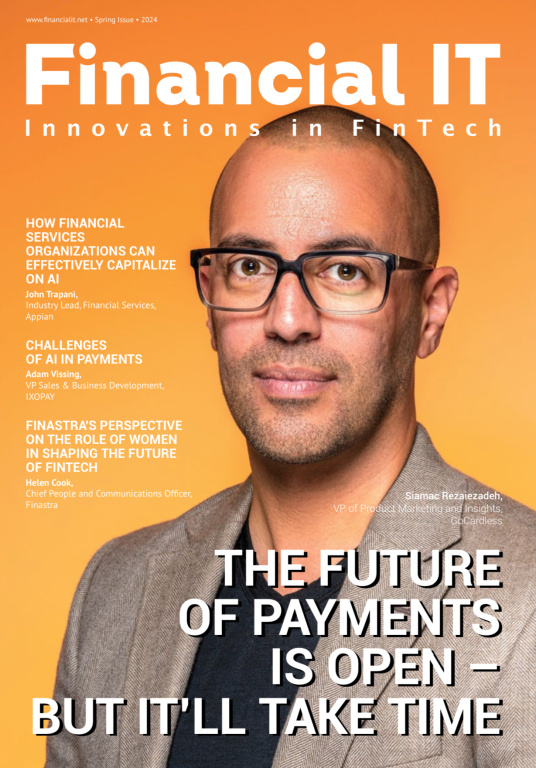Should we be scared of AI’s future potential?

- Matt Philips , VP, Head of Financial Services at Diebold Nixdorf UK/I
- 22.03.2019 07:45 am undisclosed
Artificial intelligence (AI) is a technology which is admired, feared and — some would say — hyped. Certainly AI has come a long way since its beginnings in the 1940s, when computer scientists began to create algorithms that could, to some extent, mimic human intelligence. Now, Alexa and Siri are part of daily life, we use chatbots to check our bank balance or choose a credit card and we are exposed to AI-selected adverts online daily as a matter of course.
With some forward thinking organisations, it can be difficult to tell where the AI ends and the humans begin. Much of the current evolution of AI to date has been very visible and quite often novel, leading some to assume that this technology has taken over swathes of operational tasks and giving the impression that AI is more capable than is in fact the case.
The stark truth is that many organisations, including many financial institutions, have yet to take their first real steps in AI; perhaps because they don’t know where to start, or don’t fully understand how AI — at least in its current state — can help their operations and customer services to thrive.
This state of inertia is dangerous with some organisations considering AI to currently be in its juvenile state, with much to learn. This is on many levels very accurate but like any juvenile, with education and refinement it can become a reliable and independent member of the team, adding real value to the customer journey.
Those AI applications which have been set within the right parameters, have clearly defined responsibilities and are measured within a pre-defined success framework are those which are really leading the way and delivering examples of next generation use cases - crunching data and learning and developing by the hour, even as you read this article. Their education is well under way and it will, over time, enable the financial services sector to know customers better than customers know themselves - anticipating customers’ needs and delivering a more seamless consumer experience.
And that is when the explosive potential of AI will really hit home.
The future is artificial
The extent of AI’s potential is breath-taking. If financial institutions nurture and deploy AI capabilities thoughtfully and give it a clearly defined role, just like any other employee, then even the most traditional organisations can reinvent themselves digitally and remain relevant in the tech-dominated twenty-first century.
The three strands of AI (assisted, augmented and autonomous intelligence) between them have massive potential, extending to even mimicking emotional human interactions and shared activities. Cobots – the concept of collaborative robots - are already being used to achieve the latter.
But there must be a line drawn between AI used for the sake of it (which can damage reputations and customer satisfaction) and AI that has a clear role and adds real value. Only the latter is worthwhile.
For example, a 2017 study by Accenture segmented financial services customers as nomads, hunters and quality-seekers, and established that while many valued AI-driven services such as self-service and personalisation, a substantial number still prioritised the human touch and assurances of quality and service that rely on human interaction. This highlights the importance of using AI to personalise the customer journey and provide staff with informed and actionable insights which will allow them to deliver the critical human touchpoints within the customer journey more effectively.
Proactive personalisation
In the age of information a key focus must be on using the capabilities of AI as a tool to aggregate and make more effective use of big data. Loan applications are a good example. Financial institutions can already use AI not only to determine the best product and terms for the individual client, but over time the technology may be able to anticipate the customer’s need for a loan and present bespoke solutions in a personalised format, for example through online banking or apps.
Such applications will become more commonplace and more refined. Open banking provides a huge breadth of data that AI can learn from, and permits open APIs that will probably set new benchmarks for the use of AI and in doing so, heat up the competition between organisations.
If financial organisations are on the back foot with AI now, their position can only grow more precarious. They have no choice but to take a leap of faith and embrace the capabilities of this rapidly evolving technology.
Should we be scared of AI’s future potential?
Many people fear AI, thanks largely to scare stories of replacing people and robots that are better at being human than humans are, but many of these fears are unfounded and AI should be viewed through a more positive lens. AI can be used to make customer interactions more personal (via an improved and holistic understanding of the client to provide a more customised experience) and automate routine processes. It will thus free up humans to do what humans do and what robots can’t: build and nurture relationships, personally engage with new clients and help the customers who need guidance. In a world where technology already plays a huge role in our day-to-day lives, utilising and working in conjunction with AI seems like a natural step forward.
The key message is that AI is not the technology of the future. It is already here and it can only get more intelligent and ubiquitous. Embracing the benefits of AI and leveraging them to add real, quantifiable value to your operations and services can only be considered a win-win situation for both businesses and customers.





















